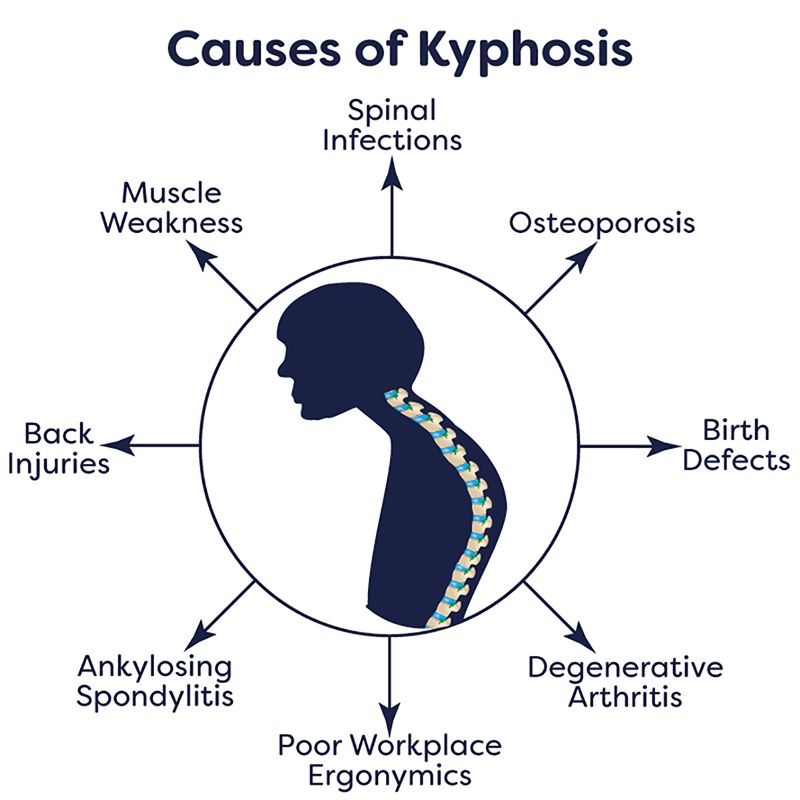
Contents
Kyphosis (Roundback)
There are three main types of kyphosis: postural, Scheuermann’s, and congenital.
The spine has normal curves when viewed from the side: an inward curvature in the cervical spine and lumbar spine, and an outward curvature in the thoracic spine.
Kyphosis is a deformity of the spine in the upper back, causing an exaggerated outward curve.
The spine is normally straight when viewed from the front, but scoliosis is an abnormal curve.
These curves allow the head to balance over the pelvis. Imbalances can lead to back pain, stiffness, and altered walking patterns.
What causes kyphosis? What are the types?
There are three main types of kyphosis: postural, Scheuermann’s, and congenital.
Postural kyphosis is most common and typically appears during adolescence due to poor posture and weak back muscles. It rarely worsens over time and has minimal risk of complications.
Scheuermann’s kyphosis is a structural deformity of the vertebrae, often accompanied by scoliosis. The cause is unknown.
Congenital kyphosis is the least common type, caused by abnormal development of the vertebrae before birth.
Other disorders can cause kyphosis in adults, such as osteoporosis, degenerative arthritis, infections, tumors, and ankylosing spondylitis.
QUESTION
What are the symptoms?
The most common symptoms of kyphosis include poor posture with a hump in the back, back pain, muscle fatigue, and stiffness.
In severe cases, the kyphosis can progress, leading to compression of the spinal cord and neurologic, cardiac, or pulmonary symptoms.
Diagnosis
Medical history, physical examination, and X-rays are used to diagnose kyphosis. MRI may be ordered for neurologic injury. Additional tests may be done for chest pain or shortness of breath.
Referral to an orthopedist may be necessary for evaluation and treatment.
Treatment
Treatment depends on the type of kyphosis. Nonsurgical options include physical therapy, exercises, and medications for pain relief and inflammation.
Scheuermann’s kyphosis may require bracing or surgery in severe cases. Surgery aims to correct the deformity, relieve pain, and improve spinal alignment.
Congenital kyphosis often requires surgery in infancy to correct the spinal deformity.
Kyphoplasty may be used for kyphosis due to osteoporosis.
Complications of surgery
The most common complications include infection and failure of fusion. Other serious complications are rare, such as nerve or vascular injury, anesthesia-related issues, or blood clots.
Prognosis
Most patients with kyphosis do not require continued care. Physical therapy, exercises, and medication are effective treatments. Severe cases that require surgery can still lead to a return to normal activities after recovery.
Prevention
Scheuermann’s and congenital kyphosis cannot be prevented. Physical therapy and exercises can help prevent or decrease the severity of postural kyphosis.
By clicking Submit, I agree to the MedicineNet’s Terms & Conditions & Privacy Policy and understand that I may opt out of MedicineNet’s subscriptions at any time.


